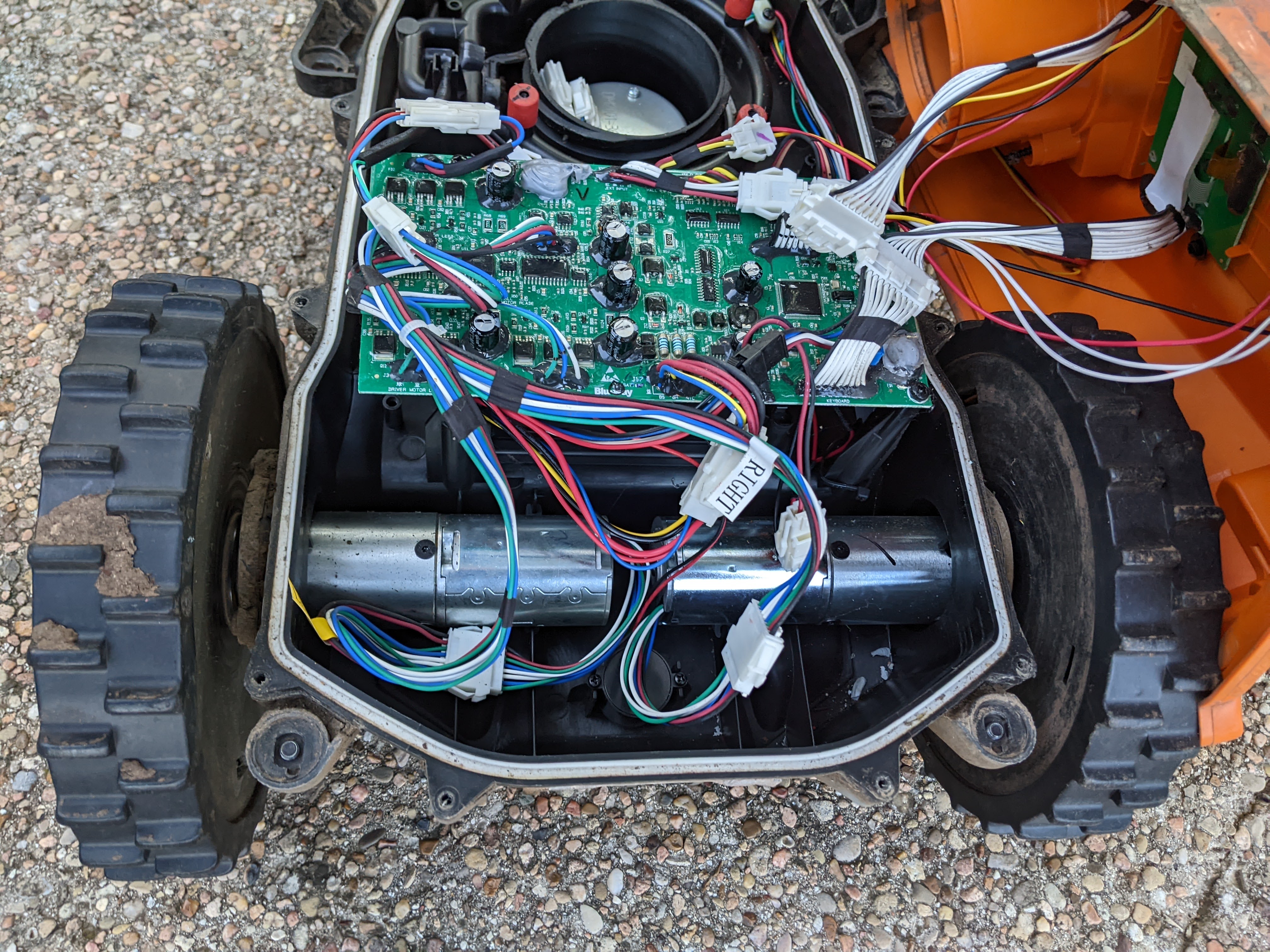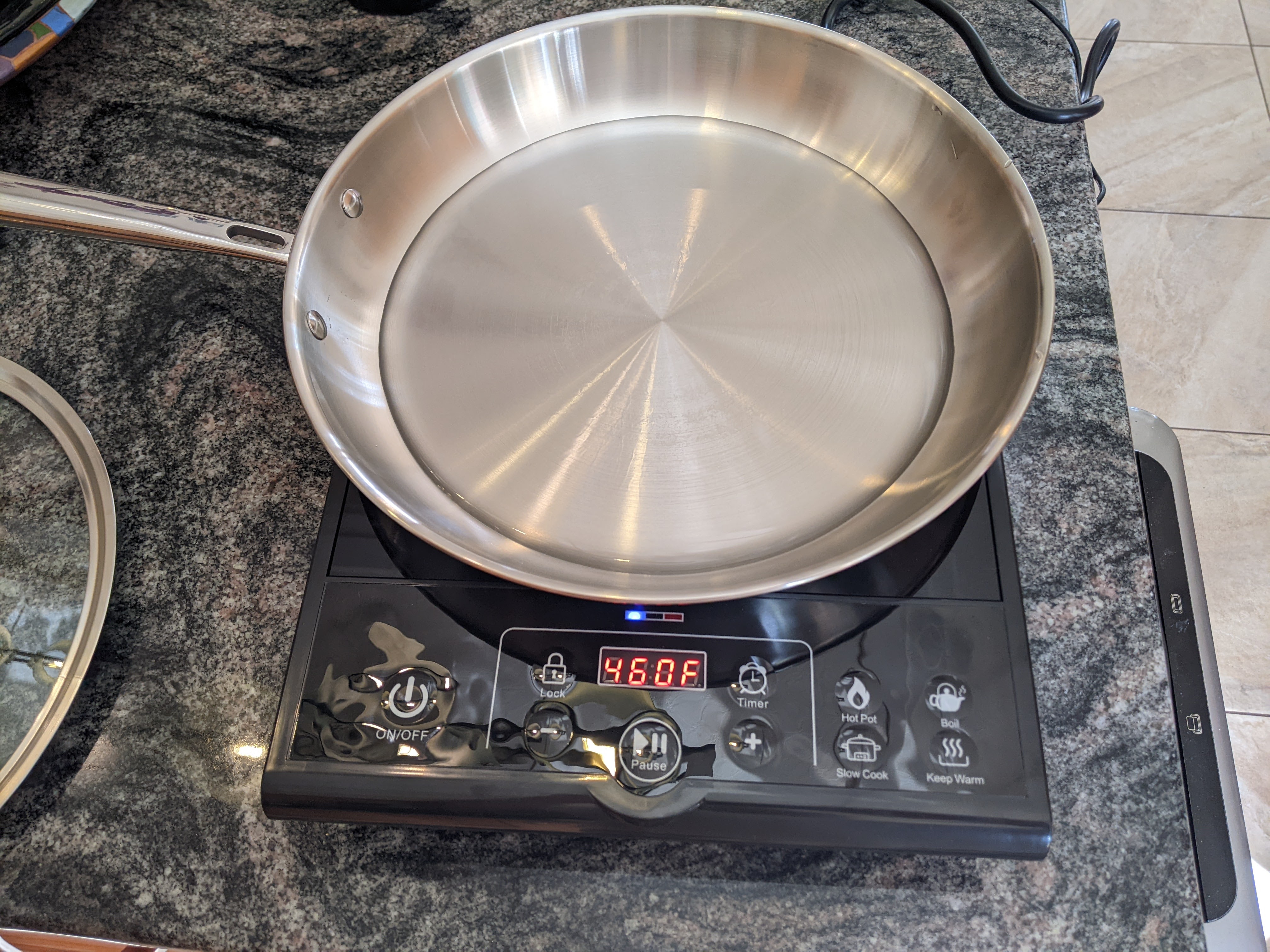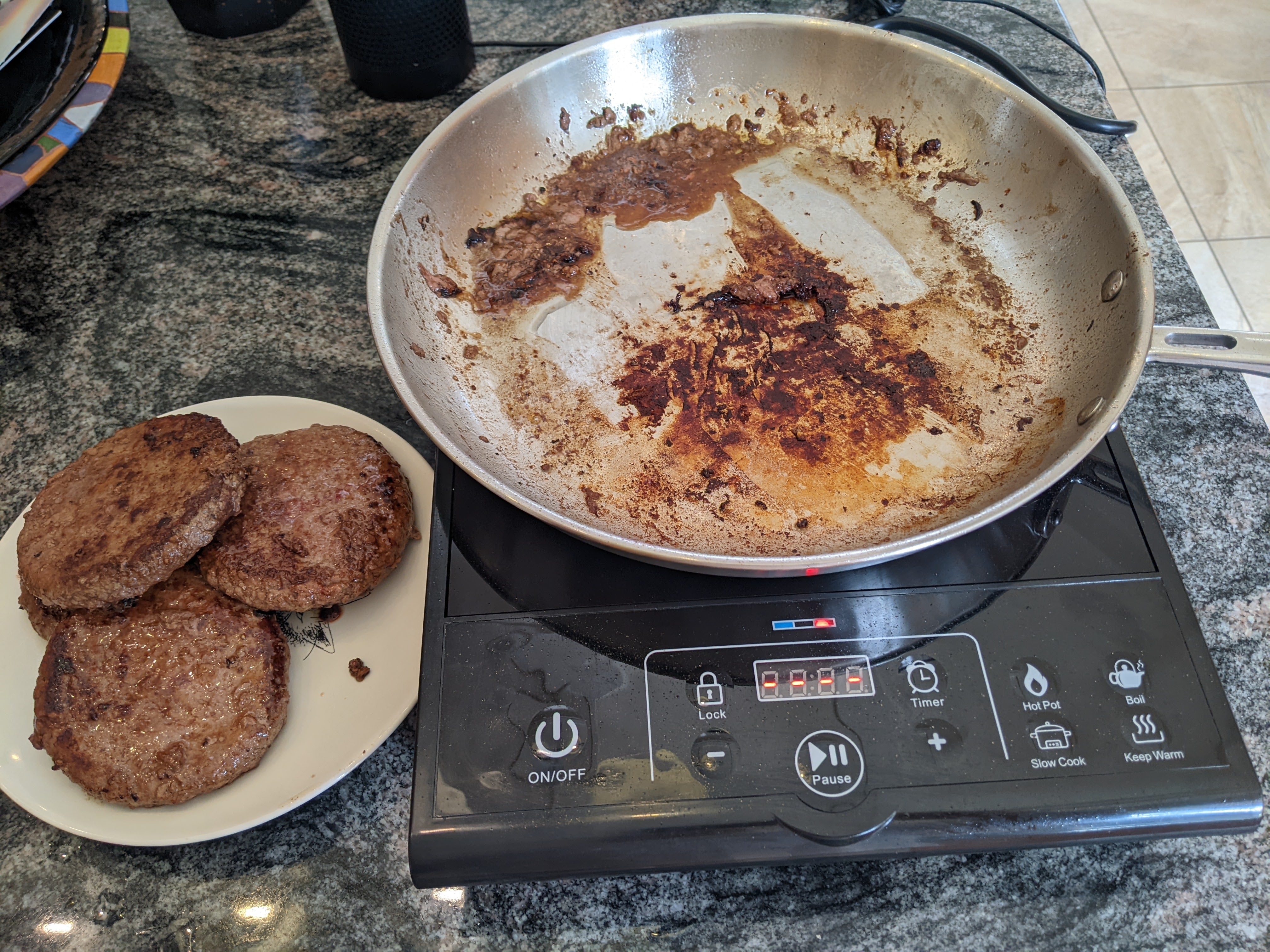I thought most people knew this stuff but maybe not. From The Garden of Forking Paths.
Month: May 2023
Robot Lawn Mower Project
Been thinking about another project. I have an older Worx Landroid WG794 robotic lawn mower. I bought it back in 2016 and it has worked reliably since then. A few minor repairs, but it is very solidly built. The biggest deficiency is that it is more of an appliance. It has a simple keypad interface and no network connectivity. You set it up and ignore it.
I have taken it apart for a minor repair. There is a small battery on the main board that keeps the clock going. Well the battery died and it isn’t easy to replace. Worx wanted to sell me a new main board and have me ship the unit to them for service. Been working without the clock functions, which is basically the scheduling of mowing. So I just turn it on when I remember and it runs until, well, I’m not sure why it stops. Maybe for a recharge. But I bought a replacement battery and think I have replaced it. Will know more when I put everything back together.
There is also a recurring “lifted up” error when it bumps a tree, but only sometimes. Seems to be getting worse. Found a small magnet and a sensor that detects when someone (or something) is lifting up the running mower. Mostly a safety feature, but now it keeps shutting off the mower. People on line have discussed it. Looks like the problem is the magnet is rusted out. Wrote Worx about a replacement and might try a substitute magnet.
One I had the unit open I started to think about hacking it. Other folks have tried to reverse engineer the software but that doesn’t help much. I am thinking of and putting in a Raspberry Pi with WiFi. All I really need to do is control two wheels and the blade. Would probably use the existing boundary wire and sensors. Some notes:
Motors: I have only worked with simple DC motors and controllers. These are three phase brushless motors. Been reading up but still not comfortable. Also there are two sets of three wires for each wheel motor. Maybe for forward and reverse? Don’t know if there are special controllers for this sort of thing. Lots to learn here.
WiFi: networked / remote control is nice, but the best part will be just making development easier. No cross platform tools and no flashing boot drives, etc. Plus all the debug advantages. The plan might be a simple layer for starters that does forward, backward and turn. Ignore everything else at first, then add in sensors and behavior.
Perimeter Boundary Wire: maybe in the future do something fancy with vision or high definition GPS. For now I’ll have to reverse engineer the sensors. I am told it is just a 70 Hz signal. Could maybe even reproduce with an audio amplifier.
Battery: the docking station is nice and might take a little bit of software. Not sure how to monitor the battery and see if it needs charging. Was thinking about using a standard removable Worx 20V battery like their other power tools use. Then just pop it out and put it on the charger when it runs low. Probably stick with the docking station until it breaks and can’t be replaced.
I guess if my repairs all work, no reason to hack up a perfectly good mower. But I might just anyway.



Bored Panda on Capitalism
One of my guilty pleasures is Bored Panda. Usually just fun and funny stuff, memes, etc. I’ll email them to a few close friends and family, but normally it isn’t the sort of thing I would post here. This morning I ran across this one which stuck with me. As the man said, the truth shall set you free. But first the truth shall make you angry.
96 Painfully Accurate Posts From ‘Workers Strike Back’ To Illustrate How Out Of Hand Capitalism Has Gotten
Water in the West
We are planning to move to the Phoenix area. With climate change, water, or lack thereof, has been in the news. I decided to read Cadillac Desert from 1986 for some background. The story is a history of water in the west. It is a story mostly of corruption and squander. But the upshot is there is plenty of water in the west, at least for things like drinking and washing. The biggest use is agriculture, with cattle farming taking the lions share. This is more for the growing of crops to feed cattle, which uses more of less half of the water in the Colorado River. It needs to be pointed out that this is a huge subsidy and there are other, much better, places to raise cattle. Like anywhere that isn’t a desert.
The New York Times has an article today that gives the numbers. The chart in the article says it all.
Tesla Model 3 Changes
We had one of the original Tesla Model 3s. Put down a deposit and waited two years to get it. We have had it since 2018 or so. It wasn’t a commute car but just one for around town driving. We also put in a home charger which made a big difference in convenience. We just got a new Tesla Model 3, and while Tesla doesn’t do the traditional sort of upgrades on a yearly basis that other car makers do, there are some changes. Here are a few early observations.
Battery: our original long range model had older lithium batteries (with cobalt?). This gave us 310 miles of range, max. But we mostly charged it to 90%, based on Tesla recommendations. We also saw a (roughly) 10% drop in capacity after a year or so. So our typical max range was more like (roughly) 250 miles. The new iron chemistry battery has a lower top range, but can be charged to 100% routinely. A complicated subject, but there are differences.
Home Charging: the old Model 3 charged at 48A on the home charger. The new Model 3 is only 32A. This is only about 2/3 as much power being delivered to the batteries. We haven’t done a big charge at home yet but I suppose it will be significantly slower. Probably won’t matter much, and shouldn’t effect supercharging.
Tax Credit: only half the $7500 tax credit. While the car is made in Fremont, CA the batteries are still from China.
Floor mats: No floor mats. Noticed quickly. Have to buy them via the app. Only $100.
Range sensors: The ultrasonic range finders used to tell how far the car is from obstacles has been replaced by camera / vision technology. So far doesn’t seem as reliable.
AM radio: Theee is no AM radio. I don’t really care, but a bit odd.
Center Console: new sliding door on console. Hated the old one. Could never get it to close properly.
USB: all USB-C. Need new charging cables. Also built in wireless phone charger. My old phone cannot use it though.
Video Saves: I’m pretty sure the old Model 3 required a specially formatted USB drive to store video from cameras for things like sentry mode. The new Model 3 seems to use existing internal memory. I’m tod there is a USB port in the glove box but I have yet to investigate.
Self Driving: we don’t have “full” self driving, but it does come with some sort of lane assist that I’m pretty sure wasn’t in the old model. I admit I’m not well versed in the different pieces of Tesla’s self driving technology.
Garage Door Opener: not a game changer, but someone should have mentioned this. The built in garage door opener is now a $350 option. Luckily we still had an old clicker so we could open the garage with the new car when we got it home.
Trunk Close Button: trunk can be closed automatically with a button. Nice because people tended to really slam the old one. I’m thinking grocery pickups during the pandemic.
Probably some (lots?) More I havent run across yet, but these are my own first impressions. All errors are mine and mine only.
Update:
Subwoofer: music doesn’t seem as good as the original Model 3. Possibly no subwoofer?
Chatbots Don’t Know What Stuff Isn’t
This morning I was wondering about negation in modern logic and AI systems. The underlying problem is that these systems are trained with facts. Things that are true. This makes sense and is the way even earlier AI and logic systems, including things like cyc, were trained. But what about things that aren’t true? Well, lots of things aren’t true. In fact, lots more things are false than are true. I can say I’m 60 years old. I can also say I’m not 59 years old. Or not 61 years old. Or not a million years old. The statements that aren’t true about this one little fact are infinite, literally.
So how does AI manage this? Just as I was wondering this, I ran across this article in Quanta. The short answer is: AI doesn’t manage this at all. If you ask a question involving a negation, you are likely to get a completely wrong answer. This is a significant problem and not an easy one to solve. A good article for anyone interested in the possibilities, and limits, of existing artificial intelligence. It may also say something about our own ability to understand what is true and what is not.
Chatbots Don’t Know What Stuff Isn’t
Renewable Milestone in Spain
I had heard Spain was a bit behind in renewables. Sounds like they are catching up. From El Pais.
The nine hours in which Spain made the 100% renewable dream a reality
Inductive Cooking
We have gas (propane actually) for heating and cooking. As part of my personal movement to Electrify Everything, I bought one of these little countertop induction hot plates. Have heard good things about them. Decided to get an inexpensive one, in case it didn’t work out. Bought this Austrian (Made in China) unit from Mueller for $50. Realized all of my cookware is anodized aluminum and none of it would work with an induction cooker. So I bought this frying pan from Misen for $60, a bit more than the cooktop itself. Was going to go slow, boil some water and maybe fry some eggs in a day or two. But we had burgers for dinner and decided to dive right in. Have to say it was better than I expected. Way better. Cleanup was a breeze too.


Sam Zell Quotes
The investor Sam Zell passed away recently. I can’t say I know much about him but the few things I read about him indicated that he had a somewhat unique astuteness when it came to investing. Some good quotes from 25iq.
A Dozen Things I’ve Learned from Sam Zell about Investing and Business
Texas Death Star Bill
The Texas Legislature is in session and, as Molly Ivins used to say, no one is safe. This latest bill seems to make local governments unable to make laws. All laws will be state laws. If this sounds crazy to you, you haven’t been paying attention.